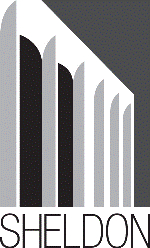Fine and Performing Arts, Hixson-Lied College of

Sheldon Museum of Art: Catalogs and Publications
Date of this Version
1972
Citation
A memorial exhibition of the graphic work of Thomas Coleman shown at the Sheldon Memorial Art Gallery, University of Nebraska - Lincoln, September 4 through October 1, 1972
Abstract
Introduction
I do not recall ever having finished a coffee break with Tom Coleman. He was not given to second cups and rarely finished his first.
When he joined the University of Nebraska art department staff in 1963, the studio facilities in the then new Nelle Cochrane Woods Building were hardly finished. With the dispatch that became so characteristic of him, Tom readied his intaglio area, and by 1966 had added lithography to his program.
Tom's work habits were rooted in Midwestern traditions. His labor was rhythmic and persistent.
His imagery was to some extent Midwestern. It stemmed for the most part from his own experience. I was aware of at least three kinds of work, formal pieces of esoteric iconography, family source compositions, and occasional humorous works.
All, save the latter, are extremely well-composed; they are structured so as to energize the emotive content therein. Conversely, Tom spoke little of composition, was much concerned with drawing skills, was widely tolerant of ideas, and got from his students an extraordinary aggregate of enthusiasm, quality workmanship and individually structured thought.
As a colleague, Tom was steady and dependable. On matters of curriculum or procedure, he took his position clearly and defended it. This made him a force among faculty and students, which, I believe, all factions respected.
Tom had several opportunities to teach printmaking in larger and more prestigious universities. He did accept several interviews. Conversation revealed that once he had set up his studio at Nebraska, his roots were firmly established.
This characteristic of Tom's, which I loosely described as Midwestern, perhaps deserves better definition. It was a sense of purpose and place that distinguished Tom. He was not seduced by climate or by wages. He was the opposite of the anti-hero of so many contemporary novels. It was this attribute that made Tom a kind of milestone in the lives of others. We knew that we had met or confronted him.

